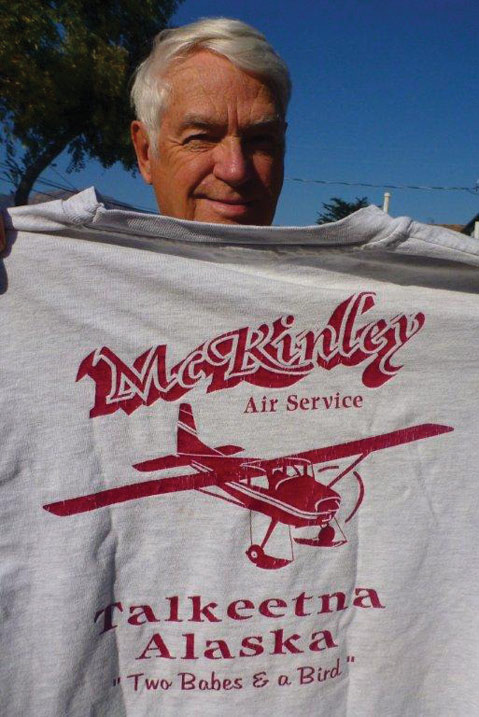Sell ‘Seward’s Folly’?
The Big Icebox Is Losing Its Cool
Back to the Russians: By the time this is published, I will be in Alaska, but not, as persistent Internet rumors have it, on a secret mission from President Obama to investigate selling it back to the Russians.
“Seward’s Folly,” as our 1867 purchase of Alaska was dubbed by opponents at the time (secretary of state William H. Seward pushed the deal), is damaged goods, at least in the minds of some. Now, its tourist-beloved glaciers are melting, its pristine forests are being cleared, and its oil reserves are dwindling.
The “big icebox” is losing its cool. We paid $7.2 million for it (two cents an acre). And from a resources point of view, it could be argued that it’s worth less by the day. Alaska isn’t even attached to the Lower 48. (Hawai‘i isn’t either, but that’s another story.)

It’s only due to one of those bizarre twists of history that we own it at all. It could still be Russian. Credit it to or blame it on Tsar Alexander II. With British Canada next door, he was afraid the Brits would grab Alaska and he’d get nothing for it. And he needed the money.
History books say Alexander hoped to get the United States and Britain into a bidding war, but the Brits would have none of it. Otherwise, Alaska might be part of Canada and Sarah Palin wouldn’t have become a vice presidential candidate. History can be tricky, eh?
So after the Civil War, Alexander’s ambassador and our people pulled an all-nighter, signing the deal at 4 a.m. without benefit of congressional approval. “A dark deed done in the night,” is how historian Ellis Paxson Oberholtzer summed up objections by some newspaper editors.
Senate Republicans howled that the useless wilderness was “Seward’s Folly,” but later okayed it. Today there are no GOP complaints. Alaska has consistently voted Republican in recent presidential elections.
You cannot drive directly from the Anchorage area, where most of the population lives, to the state capital, Juneau. There are no roads. By air or water, it is 600 miles. California for some reason elected to choose Sacramento as its capital, and it isn’t near anything either.
Juneau boasts a drive-in glacier, the Mendenhall, a short city-bus ride from town. When I visited a few decades ago, I foolishly walked right up to it, daring a chunk to slam down on me.
I just chanced upon an article by Alaskan TV and radio personality Shannyn Moore, titled “Alaska Is Being Turned into Big Game Farm.” In it, she talks about how some sportsmen like to hunt the non-sporting way. “Baiting and snaring bears, gassing wolves, shooting wolves and bear from planes and helicopters is to hunting what hiring a prostitute is to dating,” she said. Alaskans call it “harvesting,” as in crops.
So Alaska is a land of extremes, including extreme natural beauty. A few years ago, Sue and I were at a fly-in wilderness camp in the Denali area and traveling by horseback to a midnight marshmallow-roast and Bailey’s-sipping adventure (Okay, we were greenhorns, cheechakos). It wasn’t dark that far north.
Suddenly, the horses got very nervous, rolling their eyes and tossing their heads. A female moose was poking her very large nose through the bushes, regarding us with great curiosity. Now, moose are highly unpredictable, huge creatures, not to be messed with. So armed wranglers carefully gathered up our gear, and we rode off quietly into the night. The moose watched, as if to say, “Gee, guys, I didn’t mean to scare you off.”
Alaska can be very dangerous. On another trip, Sue and I chanced upon the small town of Talkeetna, between Anchorage and Fairbanks. In a bar, we met pilots who flew climbers and sightseers over to Mount McKinley. “There are a couple of gals who have a plane, and they’ll take you up,” a local told us.
We found Keli Mahoney and her partner, Lee Ann Wetzel, servicing their ski-fitted single-engine Cessna 185, wearing “Two Babes and a Bird” T-shirts. Keli was also an avid musher who took part in the famed Iditarod dogsled race. Soon we were landing on a glacier. It was the highlight of our trip.
But a few years later, on May 28, 2003, Keli crashed in clear weather at 8,200 feet, killing herself, two climbers, and a sightseer. She was 35. As I write, I have one of her “Two Babes and a Bird” T-shirts on the desk next to me. I’ll always treasure it and think of her zest for life in a rugged, beautiful country. Let’s keep it.



